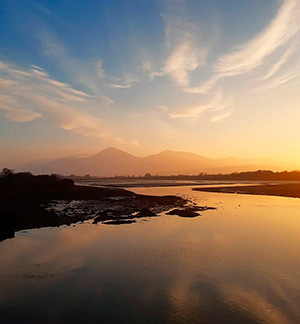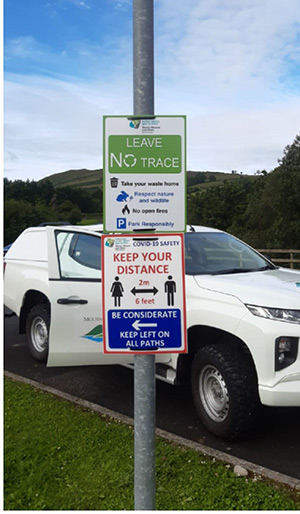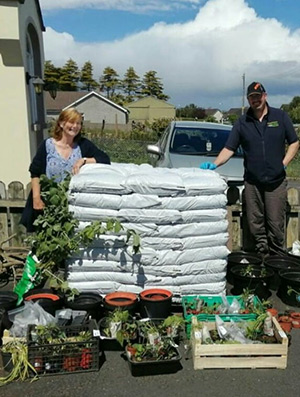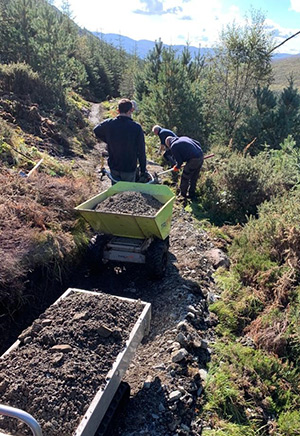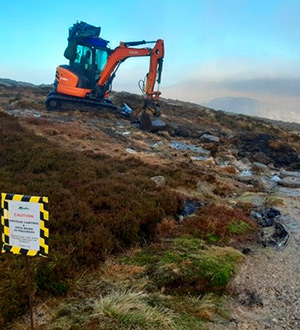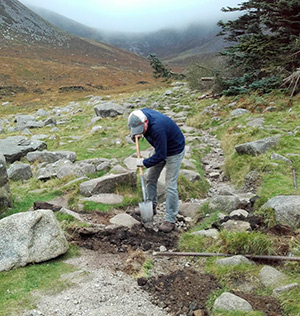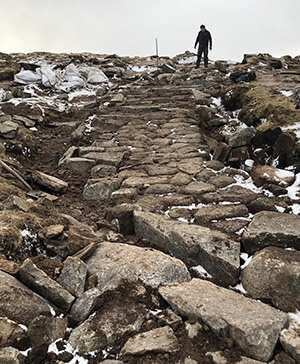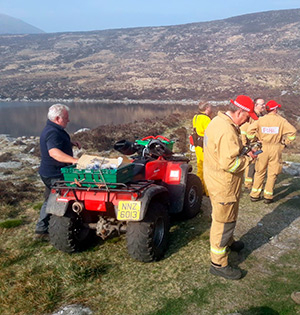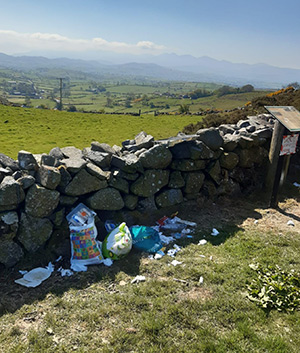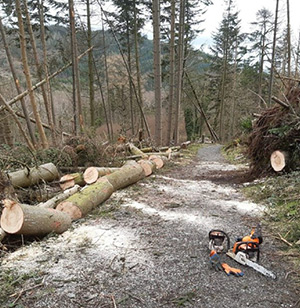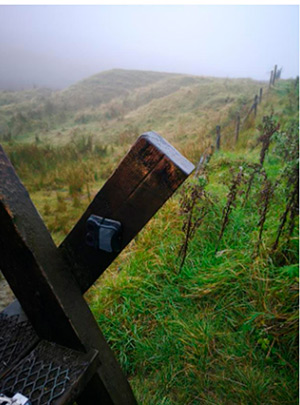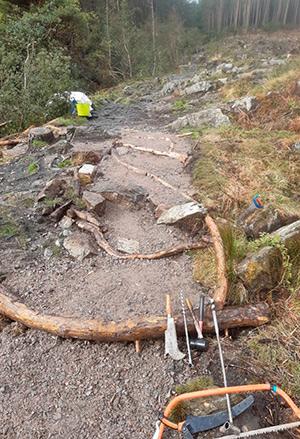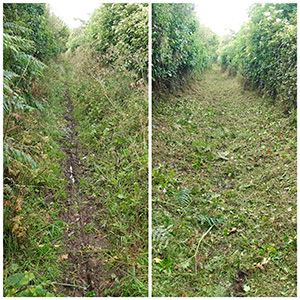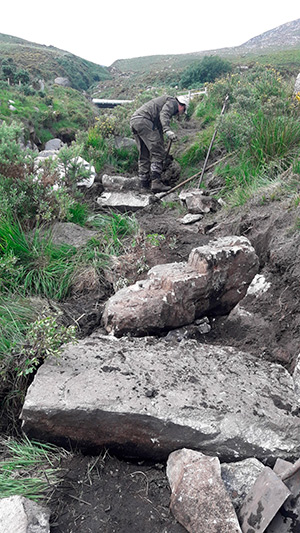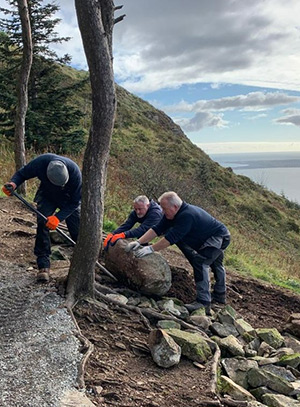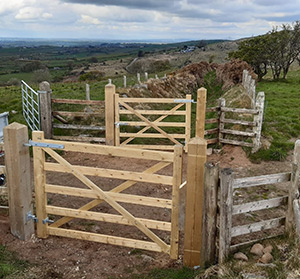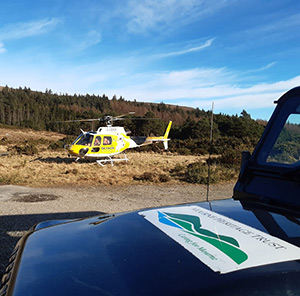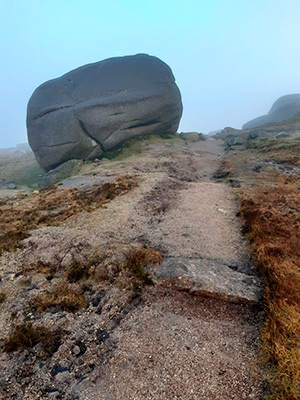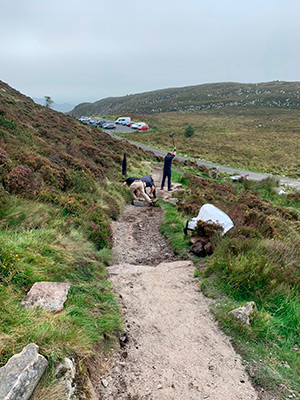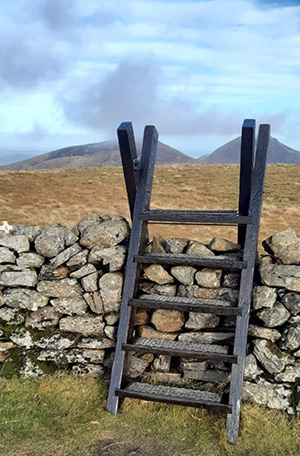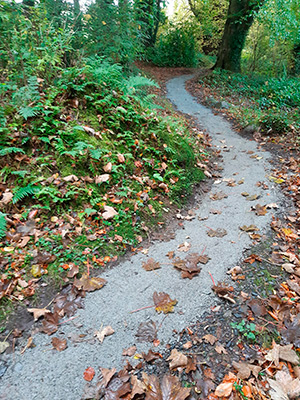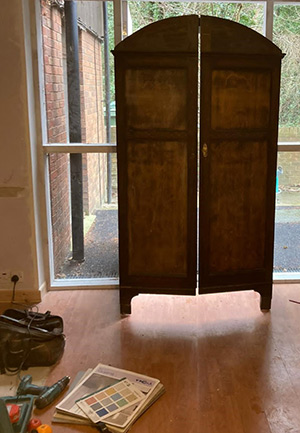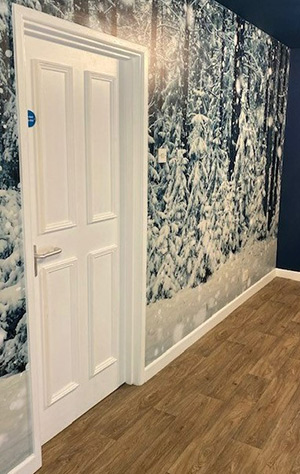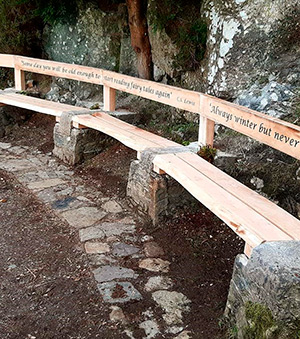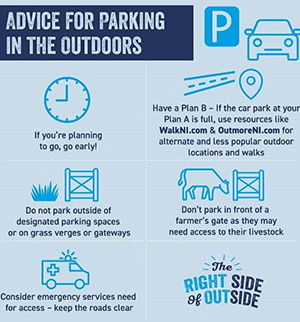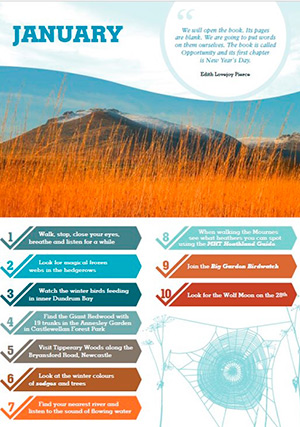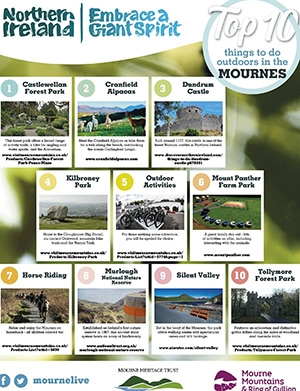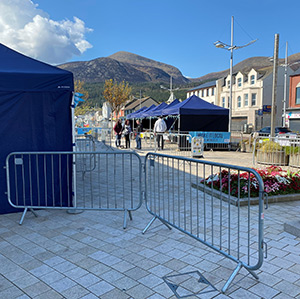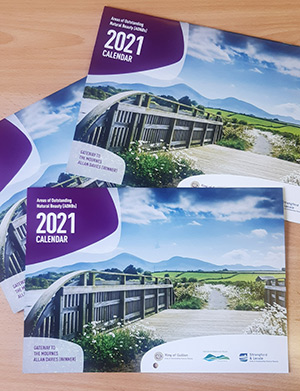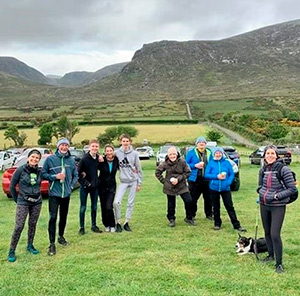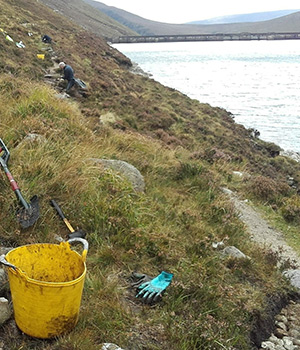Natural Environment Enhancement and Protection
Protecting and enhancing priority habitats and species and key landscape features is the cornerstone of the Trust’s work, both at landscape level and in relation to individual flora and fauna respectively. Highlights are set out below.
Litter and Dumping
With pandemic lockdowns stimulating a significant increase in people accessing the outdoors across the AONB and closing various facilities, litter, dumping and ‘party camping’ became more significant impacts on the environment. Our countryside team members re-doubled their efforts to address this very prominent blight on our landscape and key habitats. Various sites and key access corridors were visited at least weekly including the following: Moneyscalp; Trassey; Ott; Happy Valley; Dree Hill; Windy Gap; Carricklittle; Banns Road; Kilbroney mountain car park; Yellow Water; Bunkers Hill, Castlewellan Lake; Slievenaslat; Leitrim Lodge; Sandbank Road/ Hen Mountain; Kilfeaghan; Spelga; Deers Meadow; Slievenaman; Blue Quarry, Shimna Bridge; Slievenaslat/ Playrock; Dolly’s Brae; Binder’s Cove; Legananny Dolmen; Lighthouse Road; Quarter Road; Banns Road; Crocknafeola; Pigeon Rock.
In order to address a continued prevalence of litter and dumping associated primarily with wild ‘party’ camping we also undertook a regular ‘hotspot’ patrol at the following twenty locations: Sandy Brae; Fofanny; Carricklittle quarry track; Annalong Wood and Annalong River; Hamiltons Lane, Dunnywater; Long Seefin; Loughshannagh; Cnocnafeola Wood; Happpy Valley corridor; Trassey sheepfold, Clonachullion forest; Shepherds cottage; Slievenabrock; Spinkwee River; Tullybrannigan lane; Donard forest and Glen River; Bloody Bridge pipeline; Batts Wood. Most were visited either weekly or fortnightly depending on observations of frequency and extent of issues or monthly in a small minority of cases.
We also initiated a volunteer litter initiative, on which more detail is provided in the section on Engaging People with their Landscape.
Wildfire Control
It was again evident 2020/21 that fire remains a major threat to our wild lands. The spring and early summer of 2020 saw substantial landscape fires at Castlewellan Forest – a key recreational and timber resource – and at Happy Valley and Banns Road/ Lough Shannagh, both in the Eastern Mournes Special Area of Conservation. The latter in particular impacted a significant area of designated heathland and peatland. Our team attended each of these major incidents in support of NI Fire & Rescue Service, providing specialist equipment and knowledge of the terrain among other functions. We also undertook a detailed post-burn vegetation survey of the Lough Shannagh site and a post fire inspection at Happy Valley.
In a preventative capacity we undertook an evening wildfire patrol in times of high risk, in line with warnings issued by the Natural Hazards Partnership, and also carried out a number of awareness raising actions, mainly through local press and social media. Working with partners we installed weather and condition monitoring equipment at the Bog of Donard and Silent Valley which will add to our base of knowledge on fire conditions. We convened the Mourne Wildfire Group to agree a specification for a review of Mourne wildfire prevention project, which was subsequently commissioned on the group’s behalf by NI Water.
We continued to share knowledge with the Cuilcagh (Fermanagh) habitat fire including in its stakeholder meetings and through site visits. We provided input to research being undertaken by the Game and Wildfire Conservation Trust and Birmingham University respectively as well as providing various pieces of information to NI Environment Agency to inform the NI Wildfire Strategy construction.
Heathland Restoration
The upland heath habitat in the high Mournes is the feature for which it derives its status as a European Special Area of Conservation (SAC). Over the years it had been degraded by a range of natural and man-made forces including grazing, fire, footfall and extreme weather.
In order to address this threat, alongside site works at our restoration sites in the Slieve Binnian / Annalong Valley area, we continued to build our knowledge base. This included liaison with Queens University Belfast on a methodology for monitoring of gas emission from heathland sites and with that institution and Aberdeen University on potential further research. In both cases progress has not been as significant as planned due to Covid restrictions on students travelling to sites, so we engaged remotely. We also took the opportunity to conduct Initial analysis of the implications of a Phase II National Vegetation Classification survey for the Slieve Beg/ Slieve Commedagh heathland site and carried out monitoring of heathland condition between Mourne Wall at Ott track and Doan.
As with fire control we sought opportunities to share knowledge, which included input to Newry, Mourne and Down DC on development of heathland restoration approaches for the Slieve Gullion SAC and with the ‘ALICE’ Interreg funded catchment management project focussed on Carlingford Lough.
Mourne Juniper
In pursuit of protecting and enhancing the population of genetically distinct Mourne – a key and threatened part of the heathland mosaic - cuttings taken last year were sorted and re-potted achieving a 70% survival rate. A further 191 Juniper cuttings were processed and potted and 410 seeds collected, processed and placed into cold stratification for planting out in the summer. We were delighted to be able to provide juniper to a new native woodland scheme extending to 11.47ha, in partnership with Scottish Woodlands Ltd).
Red Squirrels
Monitoring work to check for grey squirrel and monitor the reds’ health, numbers and movements continued across sites in Silent Valley, Mourne Park, Kilkeel River corridor, the Annalong River corridor and Dunnywater. This was complemented by installation of new Trail Cams and further recruitment of volunteers for maintenance of feeders. A further red squirrel release at Dunnywater was undertaken in partnership with NI Water, Belfast Zoo and NIEA. We liaised with Mourne Grange (Kilkeel) about grey control and installed red squirrel feeders on private land in nearby Ballyardle.
Native Woodland
As preparations were finalised for recruitment, with Woodland Trust, of a full-time native woodlands officer, we continued to expand the reach and impact of our Trees for Mourne planting programme.
With volunteer group activity curtailed by the pandemic, we devoted additional staff time to maintenance of Silent Valley and Dunnywater nurseries. During the lockdown period we also built 215 mesh cattle / horse guards and created a storage area for a stock of Hibernian Pine which were procured.
When plating season arrived we undertook 300 metres of boundary tree planting with local landowners and prepared four afforestation applications for sites totalling 31ha of new woodland at sites in Slievenalargy, Slieve Croob, Rathfriland and Ballinran. Further partnership work with Woodland Trust on larger sites included development of schemes for Aughrim Hill and Fofanny.
We also undertook enrichment planting on existing Trees for Mourne sites.
We were delighted to be able to provide mature native oak to Newry, Mourne and Down DC for planting at various sites across the district and to reach agreement with the same authority to plant saplings in Kilbroney Park, Rostrevor grown from seed collected from mature trees that grew outside the window of C.S. Lewis’ study in Oxford and that he will have looked at while writing the Chronicles of Narnia.
... And Lots More
Other highlights of our natural heritage related work in the year included the following:
- Commissioning and substantial completion of habitat mapping in the Eastern Mournes Special Area of Conservation.
- Liaison with NI Environment Agency on Special Area of Conservation Management Plan for the Eastern Mournes, including approach to habitat mapping.
- Liaison with NI Water with respect to a comprehensive and coherent approach to catchment habitat management in the Mournes culminating in commissioning of planning work.
- Input to RSPB led Red Kites project as Steering Group member.
- Maintenance of Dunnywater apiary.
- Wildflower sympathetic maintenance regime implemented at various points on green lane network, and aftercare of planted area at Bath Lane Newcastle.
- Landscape change monitoring through fixed point photography regime and submission to NIEA.
- Clearance of invasive species including Japanese Knotweed and Himalayan Balsam at Clonallen, Warrenpoint and Glasdrumman and rhododendron at Silent Valley.
- Support to Amphibian & Reptile Group UK, Council and the Herpetological Society of Ireland on Mournes phase of Dragons in the Hills project including liaison with local schools.
- Assistance to King’s College London and Queens University Belfast study of marine conservation in the Irish Sea with reference to Carlingford Lough, including distribution and promotion of online survey.
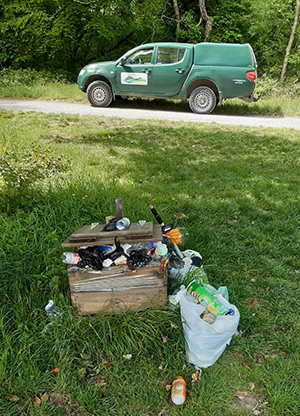
Regular patrols at amenity sites and access routes
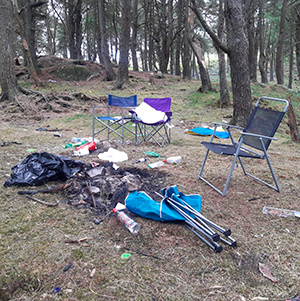
Clearing up after ‘party’ camping
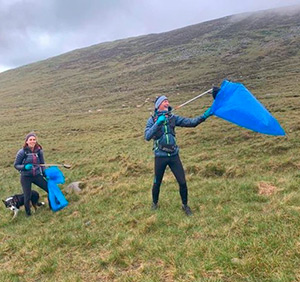
Volunteer litter lift
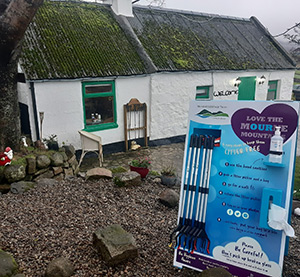
Litter picker station

Assisting Fire & Rescue Service
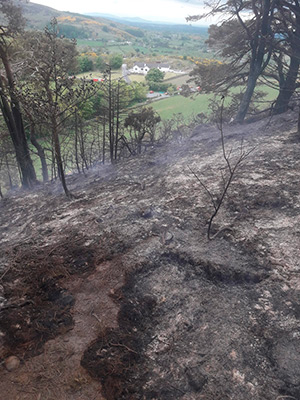
We helped control this fire at Castlewellan forest
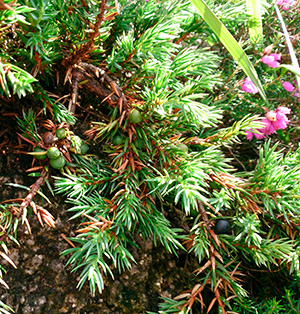
Mourne Juniper – an important heathland plant
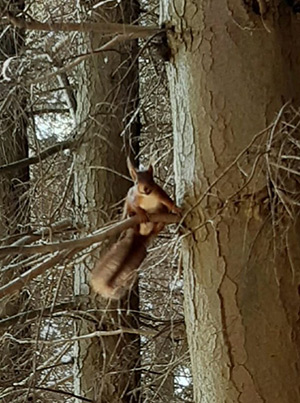
Red Squirrel
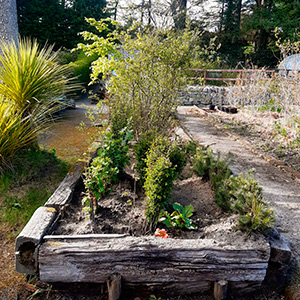
Native trees in our nursery, prepared for planting out
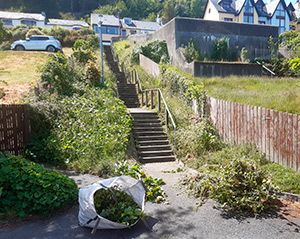
Biodiversity friendly green lane maintenance
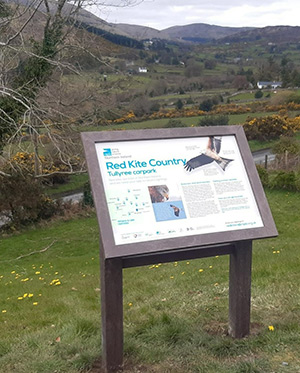
Panel installed in partnership with RSPB
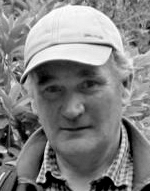 It is my pleasure to present this Annual Report on the 2020/21 business year, one that was very challenging to Mourne Heritage Trust, as it was for many in society.
It is my pleasure to present this Annual Report on the 2020/21 business year, one that was very challenging to Mourne Heritage Trust, as it was for many in society.
